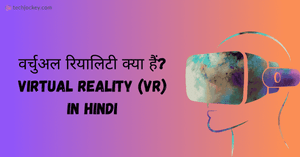What is Virtual reality software?
Virtual reality software crafts a digital 3D world where users can dive into immersive experiences, feeling like they're really there. It pairs with special gear, like headsets, to bring this virtual reality experience to life. Developers wield VR tools to shape these worlds, using 3D shapes and guides. These tools, often called SDKs, lay the groundwork for crafting VR adventures, from training simulations to gaming marvels. The best part is that new VR software even hooks into fancy gadgets like headsets and phones, making it easier than ever to dive into the metaverse.
How does Virtual reality software work?
Virtual reality software operates by constructing a virtual 3D environment where users can immerse themselves in various experiences. It begins by generating objects within this digital space, crafting detailed scenes for users to explore. Additionally, sensory feedback elements such as sound effects or haptic feedback are integrated to enhance the feeling of presence within the virtual world. Users are then fully immersed in interactive elements, allowing them to engage with the virtual environment in a dynamic way.
Key components and workings of virtual reality programs include;
- Creation of 3D objects within the virtual space to build immersive scenes.
- Incorporating sensory cues like sound effects or haptic feedback to enhance the user's sense of presence.
- Implementing interactive features that enable users to engage with the virtual environment.
- Tools used for developing VR experiences, providing the necessary framework and functionality.
- Utilizing game engines and other build tools to create and customize virtual environments.
- Tools and processes for generating and organizing content within the VR environment, ensuring a seamless user experience.
What are the different types of VR software?
Virtual reality software comes in various types, each tailored to serve different purposes and user needs. Here's a breakdown of the diverse categories:
- Simulation Software: Simulation software immerses users in virtual environments where they can engage with the content. Often, these simulations replicate real-world scenarios, such as driving a car or flying an airplane. Users can interact with objects and navigate through these virtual landscapes, providing a realistic and interactive experience.
- Game Engines: Game engines provide the foundation for creating immersive and interactive virtual reality games. Developers utilize these engines to build highly engaging experiences for VR platforms. These games often require sophisticated input methods for navigation and interaction, allowing users to experience lifelike movements within the virtual environment.
- Video Players: VR video players enable users to watch 360-degree videos within their VR headsets. These players offer features such as motion tracking and speed settings, allowing users to control their viewing experience. They provide an immersive way to consume content, from immersive documentaries to virtual tours of exotic locations.
- Educational Apps: Educational VR reality apps immerse learners in interactive environments, facilitating deeper engagement with educational material. These apps simulate real-world scenarios, allowing students to explore concepts in a hands-on manner. Educational VR finds applications in classrooms, corporate training programs, and professional development.
- Creativity Tools: Creativity tools empower users to design 3D models, virtual environments, and animated characters within VR. These virtual reality tools offer a high degree of artistic freedom, allowing creators to bring their ideas to life in immersive virtual worlds. From designing architectural models to creating interactive art installations, creativity tools open up new avenues for expression and innovation in VR.
Features of Virtual reality software
Following features of Virtual reality software offers help users to craft immersive experiences and unlock the full potential of virtual reality technology;
- Development Tools: Virtual reality software provides a suite of tools for designing, building, and testing VR reality apps. These virtual reality software development tools streamline the development process so that developers can create captivating virtual experiences efficiently.
- Hardware Integration: Integration with VR hardware is essential for delivering immersive experiences. Virtual reality programs support various VR devices, including headsets, controllers, and mobile phones, ensuring compatibility and accessibility for users.
- Training Simulators: VR training simulators offer specialized environments for immersive training experiences. These simulations replicate real-world scenarios, allowing users to engage in hands-on learning and skill development within a safe and controlled virtual environment.
- Visualization Capabilities: With the help of Virtual reality tools users can visualize and interact with products and data in a virtual space. From product prototypes to complex datasets, users can explore and manipulate visual information, enhancing understanding and decision-making processes.
- Content Management: Robust content management features facilitate the storage, editing, and publishing of VR content. Users can manage their virtual assets efficiently, ensuring seamless workflow and collaboration across projects.
- Collaboration Tools: Virtual reality tools enable real-time collaboration among remote users, fostering teamwork and communication. Users can collaborate on projects, share information, and engage in interactive activities, enhancing productivity and creativity.
- Analytics Insights: Some Virtual reality software platforms offer analytics capabilities, providing valuable insights into user behavior and engagement. These analytics tools empower businesses to optimize VR experiences and tailor content to their target audience's preferences and interests.
Benefits of Virtual Reality Software
Virtual reality software offers the following benefits;
- Virtual Training: One of the key benefits of Virtual reality software is its ability to facilitate immersive training experiences. Through simulated environments, users can engage in lifelike scenarios to hone their skills and expertise. For instance, professionals can practice public speaking in virtual settings, receiving real-time feedback and experiencing realistic distractions, thereby enhancing their performance and confidence.
- Architectural Design Prototypes: Virtual reality software empowers architects to visualize and iterate on building designs in a virtual environment. By creating virtual prototypes, architects can accurately assess the scale and functionality of their designs without the need for costly physical models. Moreover, these designs can be easily shared with clients for early feedback, facilitating collaborative decision-making and ensuring alignment with project requirements.
- Interactive Data Visualization: Another significant benefit of Virtual reality software is its capacity to transform data analysis and visualization. With 3D VR software, users can explore and interact with complex datasets in a collaborative 3D environment, gaining deeper insights and understanding. For instance, immersive 3D maps enable researchers to analyze seismic activity or visualize stock market trends, facilitating informed decision-making and enhancing communication of insights.
Top 10 Virtual Reality Software Comparison
Here is a comparison table on best VR software with their unique features and prices;
| Top 10 Virtual Reality Software Comparison |
| Softwares | Key Features | Pricing |
| Contentstack | Audit Trail, Image Editing, Multi-Channel Distribution, Workflow Management | Starts at $995/month/10 users |
| Contentful | Content Management, Drag & Drop, Multi-Channel Distribution, Version Control | Starts at $300/month/feature |
| Autodesk 3ds Max | 3D Modeling, Animation, Configurable Workflow, Physics Simulation | Starts at $205.00/month |
| Unity | 3D Visualization, Animation, Custom Development, Real Time Data | Starts at $200/month/seat min 20 seats |
| Unreal Engine | 3D Games, Animation, No-Code, Virtual Reality | Price On Request |
| VR Maker by iStaging | Drag & Drop, Lead Capture, Virtual Meetings, Reporting/Analytics | Starts at $5/month |
| echo3D | 3D Visualization, Content Creation, Customizable Branding, Virtual Reality | Starts at $99/month |
| CloudPano | Drag & Drop, Hotspot, Panoramas, Social Media Integration | Starts at $10/month |
| Concept3D | Conversion Tracking, Landscape Design, Social Sharing, User Interaction Tracking | Free |
| Pano2VR | Content Creation, Panoramas, Virtual Reality, Reporting/Analytics | Starts at €149/month |
How do we evaluate and select the Best Virtual reality software for you?
To evaluate and select the best Virtual reality tools for you, we considered a range of factors to ensure the software met your specific needs and preferences. Our evaluation process involved examining key features such as VR development tools, compatibility with hardware devices, content management capabilities, collaboration features, and pricing plans. By thoroughly assessing these factors, we aimed to recommend virtual reality software solutions that offered robust functionality, easy integration, and excellent value for your investment.
How to choose the best Virtual reality software?
Choosing the best VR software involves considering two main factors:
- Functionality: Different types of VR software offer various functionalities, including visualization, content management, game engines, social platforms, and training simulators. It's essential to assess your requirements before selecting a VR tool to ensure it meets your needs.
- Compatibility: Ensure the VR software is compatible with your existing infrastructure. Check the system requirements and hardware specifications to see if they align with your computers and devices. Determine if any additional hardware investments are needed for full utilization.
What Is the Difference Between VR and AR? MR and XR?
The common aspects that differentiate immersive technologies like Virtual Reality (VR), Augmented Reality (AR), Mixed Reality (MR), and Extended Reality (XR) are as follows;
- Virtual Reality (VR): VR technology immerses users in a completely digital environment, blocking out the physical world entirely. By stimulating the visual and auditory senses, VR creates a sense of presence and immersion. For instance, VR experiences like the "Walk the Plank" challenge demonstrate how visual and auditory stimuli alone can induce strong emotional responses, with the addition of physical elements enhancing the sense of immersion further.
- Augmented Reality (AR): In contrast to VR, AR overlays digital elements onto the real-world environment, offering a composite view of physical and virtual elements. While AR experiences may allow for limited interaction between digital and physical elements, the primary focus is on augmenting the real-world environment with digital content. AR has vast applications across industries, from aiding medical procedures to enhancing educational experiences.
- Mixed Reality (MR): MR combines elements of both VR and AR, allowing for the superposition of digital elements into the real-world environment and enabling interaction between the two. Users can see and interact with both digital and physical elements simultaneously, with MR experiences adapting to changes in the environment. This dynamic interaction between digital and physical worlds distinguishes MR from other immersive technologies.
- Extended Reality (XR): XR serves as an umbrella term encompassing various immersive technologies, including AR, MR, VR, and any future developments in altering reality with digital elements. XR blurs the boundaries between physical and digital realities, offering a spectrum of immersive experiences. While XR technologies continue to evolve, usability testing and simplicity are crucial in delivering compelling experiences and pushing the boundaries of immersive technology.
What is the cost of Virtual reality software?
Determining the cost of Virtual Reality (VR) software varies based on the specific sub-category and features included. VR collaboration software typically ranges from around $30 to $100 per user per month, offering tools for remote collaboration and communication in virtual environments. On the other hand, VR gaming engines come at a higher price point, starting from $185 per month and going up to over $7,000 per year, providing developers with the framework to create immersive gaming experiences. Content management software for VR can be priced up to $900 per month, offering solutions for storing, editing, and publishing VR content.
























